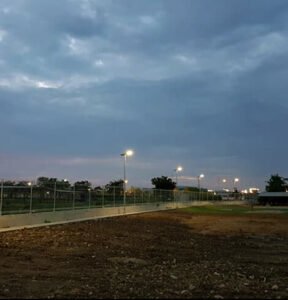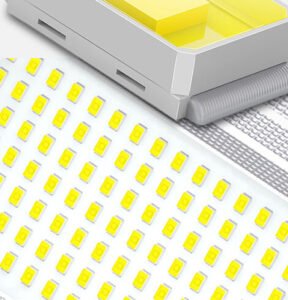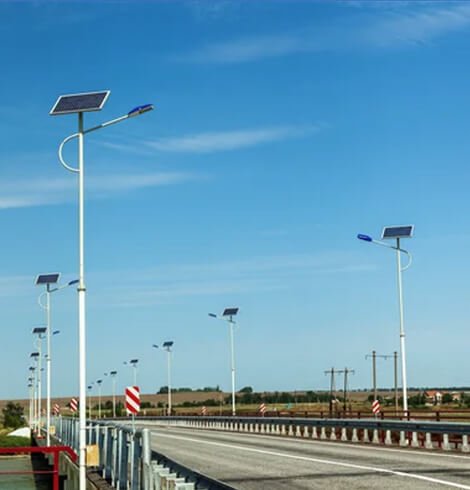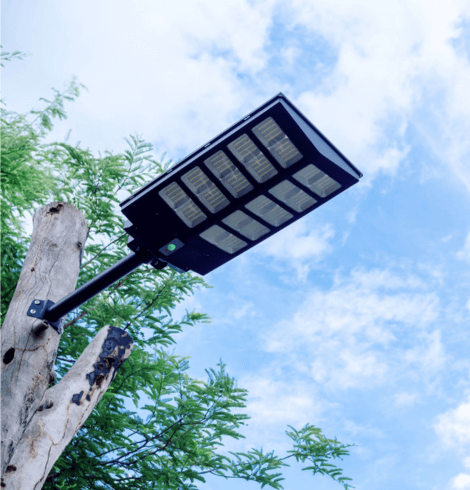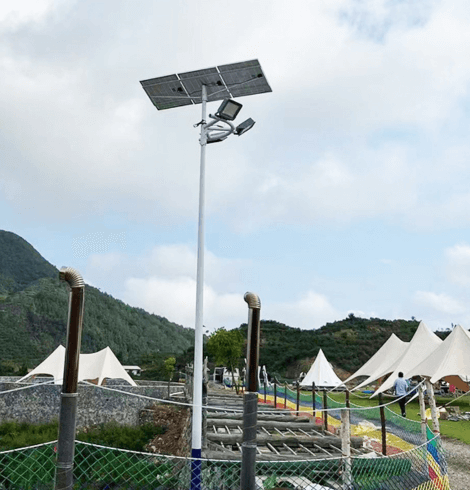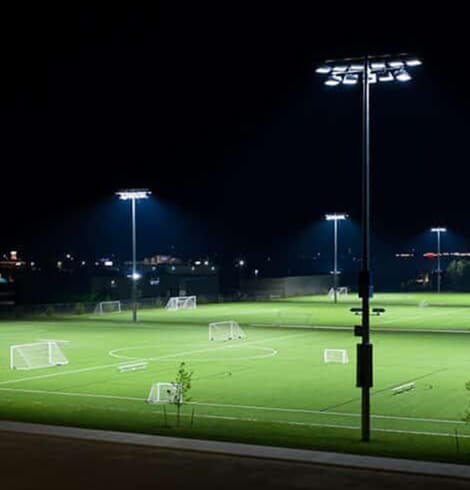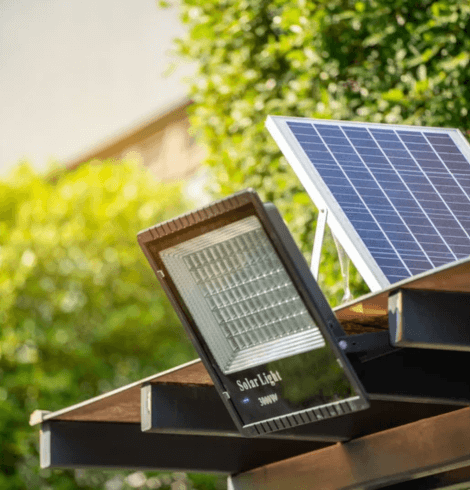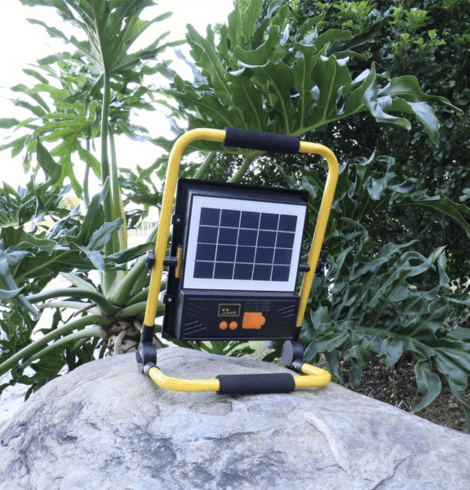Quick Answer:
Solar street lights use a built-in light sensor to detect when it gets dark. When sunlight fades below a certain level, the controller activates the LED lamp using power stored in the battery. At dawn, the light turns off automatically, starting a new charge cycle.

Table of Contents
ToggleIntroduction
Solar street lights have this almost magical ability to know when night has fallen. You’ve probably seen them — lights that come on just as the sun sets, glow steadily all night, and turn off again by sunrise. No timers. No switches. No wires. Just clean, quiet operation powered by the sun.
But once you peel back the surface, it’s not magic. It’s a system built from a few well-designed components working together. At the heart of it is a simple question: is it light out, or is it dark? And how the light answers that question — and acts on it — is where the story begins.
The Core Technology: The “Dusk-to-Dawn” Secret
Every solar street light has a way of detecting how bright or dark the surroundings are. It doesn’t rely on a clock. It doesn’t check your calendar. Instead, it uses a small device called a light-dependent resistor, or LDR. This little sensor constantly measures how much light is around it.
Meet the LDR: The sensor that sees the sun
During the day, when there’s plenty of light, the LDR allows current to flow easily. But at night, when the light fades, it starts to resist that current. The light’s controller is watching this shift in resistance like a traffic signal. When the resistance crosses a certain threshold, the system knows: it’s time to turn on.
This is the core idea behind dusk-to-dawn lighting. It’s based on real-time conditions — not a schedule. That makes it smarter and more adaptable, especially in places where sunset and sunrise vary throughout the year.
And that brings us to the next part of the system: the controller, which is responsible for reacting to that signal.
The Role of the Solar Controller
Once the light sensor says it’s dark enough, it’s up to the controller to do something about it. Think of the controller as the system’s decision-maker. It receives information from the LDR or the solar panel itself and decides what to do with the electricity flowing through the system.
When sunlight is available, the controller channels that power into the battery and prevents the LED lamp from turning on — after all, there’s no need for lighting when the sun is out. But as evening approaches and the light level drops, the controller switches modes. It opens the path from the battery to the LED, allowing current to flow and the light to shine.
So you can think of it like this: the sensor detects when night begins, and the controller flips the switch. But of course, to flip that switch, you need energy. And for that, we turn to the battery.
Voltage Sensing: How Light Becomes an On/Off Signal
This transition from day to night — and back again — wouldn’t be possible without a bit of clever sensing. The LDR does more than just notice light levels. It changes its electrical resistance depending on how much light hits it.
When it’s bright outside, the resistance is low. Electricity flows through it easily, and the controller knows it’s daytime. But when it gets dark, the resistance increases dramatically. Less current passes through, and the controller interprets that as nightfall.
This shift in current — really, in voltage — is how the system turns the presence or absence of sunlight into a reliable signal. It’s physics doing what physics does best: turning invisible changes into measurable actions.
And now that we’ve got a way to tell when it’s dark, and a controller ready to respond, we need to make sure there’s energy stored up and ready to use. That’s where the battery comes in.
The Power Supply: Batteries and Their Purpose
A solar panel doesn’t help you after sunset unless you’ve got a way to store what it collects. That’s the role of the battery — the system’s reservoir of energy.
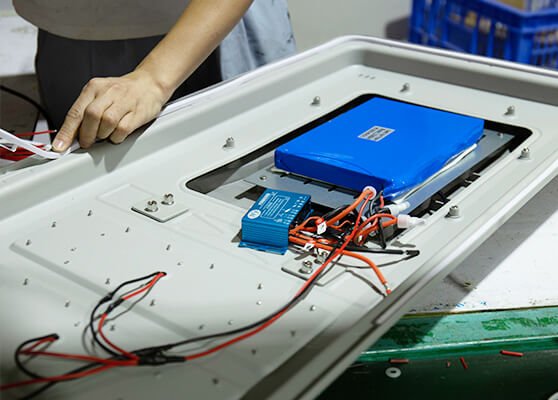
During the day, the solar panel soaks up sunlight and converts it into electrical energy. This energy is stored in the battery, typically a lithium-ion or gel-based deep-cycle battery, depending on the system’s size and budget.
The battery must be large enough to hold enough charge for a full night of operation — and ideally have extra capacity in case a few cloudy days come along. If the battery is undersized or of poor quality, it might run out before morning. If it’s well-sized and well-maintained, the light can keep shining night after night, reliably and without interruption.
The controller plays a key role here too. It makes sure the battery isn’t overcharged during the day or over-discharged at night. Both situations can damage the battery and shorten its lifespan. So even while the system is doing its job quietly, a lot of thought goes into protecting its most critical component.
Understanding how the parts work together is easier when you follow them through a full 24-hour cycle. Let’s do that now.
A Day in the Life of a Solar Street Light: The Step-by-Step Process
Step 1: Sunrise and system reset
In the early morning, as the sun rises and light returns, the system shifts into charging mode. The light turns off — there’s no need to waste energy — and the solar panel begins to generate electricity.
Step 2: Energy storage through the afternoon
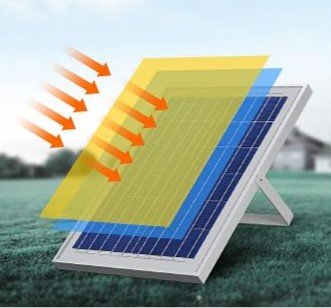
That electricity doesn’t go to the LED lamp. It’s routed into the battery, which slowly charges throughout the day. This is the system’s preparation phase — building up energy for the night ahead.
Step 3: Sunset triggers the light
As daylight fades and shadows stretch longer, the controller starts watching the light sensor more closely. Once the sensor reports that it’s dark enough, the controller activates the light. Power flows from the battery to the LED, and the lamp turns on automatically. No one needs to do anything.
Step 4: All-night operation from stored energy
Through the night, the LED runs on battery power. If the system has smart dimming, the controller might reduce brightness during the deepest hours of the night to conserve energy. In some cases, motion sensors are used to increase brightness only when someone approaches.
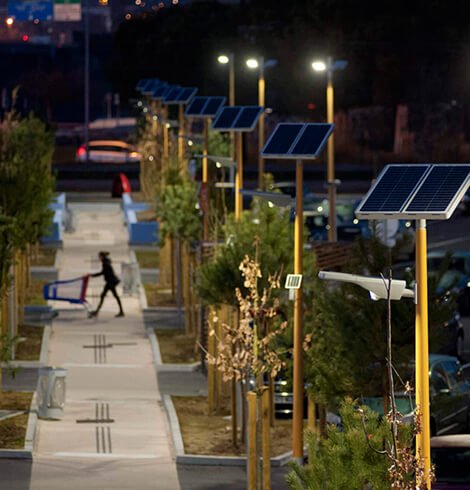
Finally, when the sun rises again, the cycle resets. The light turns off. The battery begins charging. And the whole system continues its silent, reliable routine.
But solar lights today are getting smarter. Let’s explore what modern features are showing up in next-generation systems.
Beyond the Basics: Advanced Features for Modern Solar Lights
Basic dusk-to-dawn lighting is enough for many situations. But in commercial, industrial, or citywide deployments, you often want more control. That’s where advanced features come in.
Motion sensors: Lighting only when needed
Some systems include motion sensors, which allow the lights to stay dim — or even off — until someone passes by. The sensor detects movement, such as a person walking or a car driving past, and tells the controller to temporarily boost the brightness. Once the area is empty again, the light returns to a lower level. This saves energy while still providing safety and visibility when needed.
Intelligent dimming: Matching brightness to time of night
Another feature is intelligent dimming. Rather than running the light at full brightness all night, the system can adjust the output over time. It might start bright at sunset, dim slightly after midnight, and brighten again near dawn. This not only reduces energy consumption but also extends battery life and improves long-term reliability.
Remote monitoring: Smarter maintenance and control
In large-scale systems, such as those used by municipalities or industrial parks, remote monitoring adds another layer of efficiency. These systems allow operators to check the battery status, update settings, and receive alerts if a light fails — all without sending a technician on site. This kind of remote control helps lower maintenance costs and improves system uptime.
Now that we’ve covered the technology and features, let’s clear up a few of the most common questions buyers and users tend to have.
Essential Questions About Solar Street Lights, Answered
Do they work on cloudy or rainy days?
Yes, they do — but only if the system is properly sized. Even under cloud cover, solar panels still generate some energy. And the battery is typically designed to store enough power for at least one or two nights without a full day of sun. In areas with frequent overcast weather, using a larger panel or higher-capacity battery can make all the difference.
How long do the batteries last?
That depends on the battery type and how the system is managed. Lithium-ion batteries can last five to ten years if well protected from overcharging and deep discharging.
Older gel or lead-acid batteries usually last three to five years. Either way, regular inspection and responsible sizing can greatly extend the battery’s useful life.
Can I use a solar street light for my home?
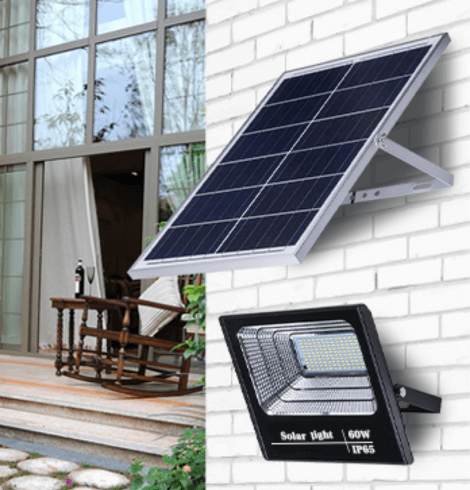
Absolutely. Homeowners use solar lights to illuminate long driveways, backyards, private roads, or gardens — especially in places where pulling electric wires would be expensive or impractical.
As long as you choose the right wattage and ensure the panel gets enough sunlight during the day, it’s a smart, low-maintenance choice for residential use.
What is the difference between monocrystalline and polycrystalline panels?
Monocrystalline panels are more efficient and perform better in low-light conditions. They’re also more compact, which helps when space is limited. Polycrystalline panels are more affordable but slightly less efficient, meaning you may need a larger surface area for the same output. For larger or critical installations, monocrystalline is usually worth the investment.
The Future of Lighting: Why This Technology Matters
Solar street lighting does more than just cut power bills or avoid digging up roads for wiring. It represents a bigger shift — a move toward self-powered infrastructure that doesn’t rely on the grid to function. That’s a game changer for rural villages, smart cities, and even disaster response zones.
By turning sunlight into nighttime safety, solar street lights are making lighting cleaner, more reliable, and more accessible. And because the system responds to the world around it — adjusting to light, motion, and demand — it fits naturally into the future of intelligent energy use.
The lights come on automatically. They use no fuel. They require little maintenance. And every day, as the sun rises, they get ready to do it all over again.



